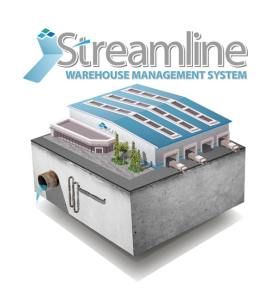
Warehouse Management: Streamline Inventory Handling
admin
- 0
Managing inventory effectively is crucial for any business that deals with physical goods. Warehouse management plays a significant role in ensuring smooth operations and maximizing productivity. With the right strategies and tools, businesses can streamline inventory handling, improve accuracy, and reduce costs. This article explores the concept of warehouse management and highlights the importance of proper inventory handling.
The Importance of Warehouse Management
A well-managed warehouse is essential for maintaining a healthy supply chain and meeting customer demands efficiently. Effective warehouse management ensures that the right products are available when needed, eliminating delays and preventing stockouts. It also helps in improving customer satisfaction and retaining loyal clients. Moreover, efficient warehouse management minimizes inventory holding costs. By implementing optimized storage and retrieval processes, businesses can reduce excess inventory and eliminate waste. This leads to significant cost savings, as carrying excess inventory ties up capital and incurs additional expenses such as storage, insurance, and depreciation.
Streamlining Inventory Handling
To streamline inventory handling and enhance warehouse management, businesses can adopt various techniques and technologies. These approaches help in maximizing efficiency, increasing accuracy, and reducing errors. Here are some strategies to consider:
1. Implement Inventory Tracking Systems
Implementing an inventory tracking system is crucial for effective warehouse management. Such systems utilize technology like barcode scanning or radio frequency identification (RFID) to track items throughout the warehouse. This ensures real-time visibility, accurate inventory counts, and reduces the chances of stockouts or overstocking.
2. Optimize Warehouse Layout
Designing an efficient warehouse layout is paramount to streamline inventory handling. This involves organizing products in a logical manner, based on factors like demand frequency, product size, and pick paths. By optimizing the layout, businesses can minimize travel time, improve order picking efficiency, and reduce the risk of errors.
3. Adopt Automated Storage and Retrieval Systems
Automated storage and retrieval systems (AS/RS) are advanced robotic systems that automatically handle inventory storage and retrieval tasks. These systems utilize technologies like conveyor belts, cranes, and robots to speed up the movement of goods. AS/RS enable fast and accurate order fulfillment, reduce labor requirements, and optimize space utilization.
4. Employ Demand Forecasting
Demand forecasting plays a crucial role in inventory management. By analyzing historical data, market trends, and customer insights, businesses can predict future demand more accurately. This helps in optimizing inventory levels, reducing the risk of overstocking or stockouts, and improving overall warehouse management.
5. Embrace Just-in-Time (JIT) Inventory Management
Just-in-Time (JIT) inventory management is a lean approach that focuses on minimizing inventory levels. Instead of stockpiling large quantities, businesses only stock items as needed. By adopting JIT techniques, companies can reduce carrying costs, minimize waste, and improve inventory turnover rates.
6. Train Warehouse Staff
Properly trained warehouse staff is essential for efficient inventory handling. Invest in comprehensive training programs that educate employees about warehouse management best practices, order fulfillment processes, equipment operation, and safety procedures. Well-trained staff can minimize errors, improve productivity, and contribute to smoother warehouse operations.
Conclusion
Effective warehouse management is critical for businesses to thrive in today’s competitive marketplace. By streamlining inventory handling and implementing appropriate strategies and technologies, companies can enhance accuracy, productivity, and customer satisfaction. Prioritizing warehouse management ensures that businesses maintain optimal inventory levels, reduce costs, and stay ahead of the competition.

